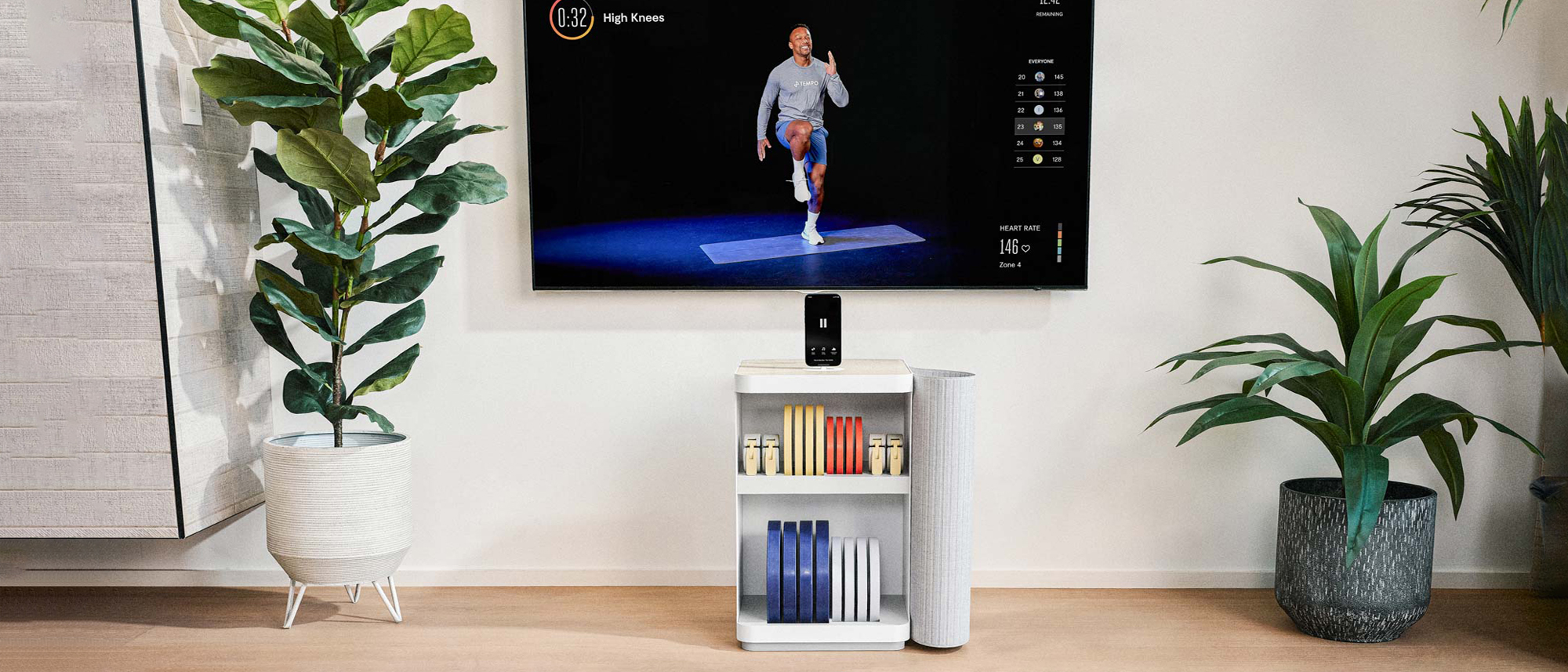Tom's Guide Verdict
Priced at a fraction of the company’s premium Studio bundles, the Tempo Move is a relatively affordable investment for comprehensive personal training in a diminutive package. From yoga to strength training – and everything in between – there’s a lot to like about this incognito fitness platform.
Pros
- +
Weight plates and dumbbells included
- +
Much more affordable than the Tempo Studio
- +
Discreet cabinet looks a classy end table when not in use
- +
Step-by-step instruction for every workout
- +
Keeps track of your form with 3D Tempo Vision (via iPhone camera)
- +
Diverse array of fitness classes for every body type
- +
60-day risk-free trial
Cons
- -
iPhone-only (XS/XR or higher)
- -
iPhone runs hot after use
- -
Requires monthly membership and annual one-year commitment
- -
Motion-sensing tech requires 36 square feet of open space
- -
Loose port connection on Core module
- -
Less robust platform than iFit
- -
No live classes – yet
- -
Not meant for powerlifters
Why you can trust Tom's Guide
Price: $495 + free shipping
Hardware Requirements: iPhone (XS/XR or higher), TV/display with HDMI port
Included Accessories: Tempo Core, HDMI cable, weight storage cabinet, weight collars, 7.5 lb dumbbells (2), 1.25 lb smart weight plates (4), 2.5 lb smart weight plates (4), 5 lb smart weight plates (4)
Bluetooth Compatibility: Tempo Heart Rate Monitor, Apple Watch
Size: 22 x 13.5 x 13.5 inches
Warranty: 3 years
The Tempo Move represents the next evolution of smart home gyms, but that doesn’t mean this personal training platform is getting too big for its britches. On the contrary, the Tempo Move is a fraction of the size — and price — of its older sibling, the Tempo Studio. It uses the same 3D Tempo Vision tech to track body movements and provide real-time guidance, but instead of a bulky six-foot-tall tower to house all that hardware, the Move utilizes your iPhone’s depth-sensing technologies to create a precise 3D map of both the user and the surrounding environment. And instead of a 42-inch touchscreen to display those on-demand classes with real-time data, the Move hooks up to any HDMI-capable TV or tablet, allowing for a helluva lot more flexibility and portability for the entire package.
The Tempo Studio was released in 2020, and it only took a couple of years for smartphone tech to catch up with the company’s vision. Granted, Peloton is largely responsible for kickstarting the subscription-based workout class trend, but competing models like the Mirror, Tonal, and NordicTrack Vault were quick to follow suit. Nowadays, it seems like all my fitness gear is connected and with the direction fitness tech is going, gym memberships might be headed for the endangered species list. But how does the Tempo Move compare to other smart home gym equipment? Read our Tempo Move review to find out more.
Tempo Move review: Price and availability
Let’s start with the best part: unlike the monolithic NordicTrack Vault, which is essentially immovable once set up, the Tempo Move is around the size of an end table, and roughly the same price as a premium cabinet. Available on Tempo’s website for $495, there are two color schemes to choose from: “light” or “dark.” The former option has a white chassis and pine-colored surface; the latter has a gunmetal gray chassis and chestnut-colored surface.
In addition to the weight storage cabinet, the Move includes the Tempo Core (ie, where your iPhone and TV/display plugs into), an HDMI cable, four weight collars, two 7.5-lb dumbbells, four 1.25-lb smart weight plates, four 2.5-lb plates, and four 5-lb plates. It’s a modest weight-training setup (which is part of the point), but if you’re new to the world of pumping iron, there are plenty of exercises you can do with Tempo’s minimalistic approach to gym gear. The real meat of this platform, after all, is the personal training part. (More on that below.)
In stark contrast, Tempo offers three different “bundles” for the Studio tower: the Starter, Plus, and Pro. The base bundle costs $2,495 (plus $250 for shipping) and comes with two 7.5-pound dumbbells, four weight collars, several weight plates (75 pounds total), and a workout mat — all housed within the Tempo Studio itself, which is attractive but undeniably bulky. The $3,245 Plus bundle includes all of the above, along with a 25-pound barbell, two more weight collars, two 25-pound weight plates, a recovery roller, a heart rate monitor, and a folding bench. If your pockets are deep enough, the top-of-the-line $3,995 Pro bundle adds in two 45-pound weight plates, a weight storage rack, a folding squat rack, and Tempo’s kettlebell system. It’s nice to see so much upgradeability; you could easily complement the Move with one of these bundles down the line, or purchase accessories a la carte.
The Tempo Move requires an annual membership ($39 per month with a 12-month commitment), but since it doubles as a storage cabinet/end table, the Move is technically still useful even if you let that membership expire. This is the same amount that iFit charges per month, and it’s on par with any annual gym pass — which rarely includes personal training. You may need to set aside a specific budget for your monthly fitness, but from where I’m standing, that’s hardly a bad investment.
Note: As of this writing, the Tempo Move was on sale for $395, which sweetens the deal a bit for anyone on the fence.
Get instant access to breaking news, the hottest reviews, great deals and helpful tips.
Tempo Move review: Setup
Whereas the Tempo Studio Plus bundle I reviewed last year came with “white glove” service to take care of setup, no such assistance is necessary for the Tempo Move. My review unit came in an attractive gray-and-chestnut-colored design and with the included accessories stowed away, you’d never know it was a piece of cutting-edge fitness equipment.
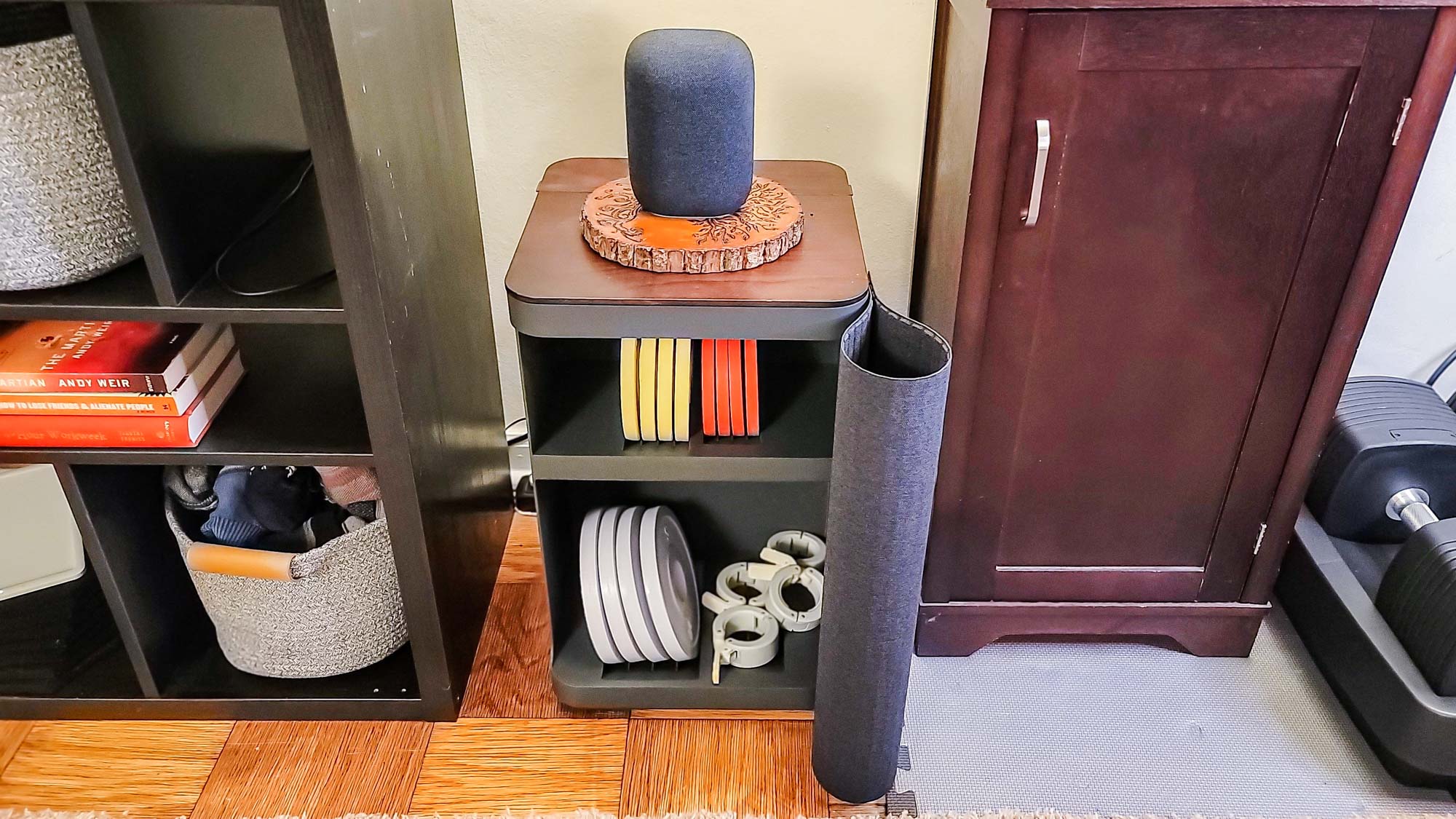
To work properly with your iPhone’s camera — and the phone’s True Depth sensor for motion tracking — Tempo recommends a 6 x 6-foot square area of space between you and the TV screen/storage cabinet. It only takes a few minutes to download the Tempo app, activate your account, and set up a customized fitness profile.

This involves inputting your physical stats and creating a personalized workout plan based on your fitness goals, weight training experience, the equipment you own, and preferred workout days. Then it’s just a matter of connecting the Tempo Core module to your TV/tablet, docking your phone to the Core, and you’re good to go!
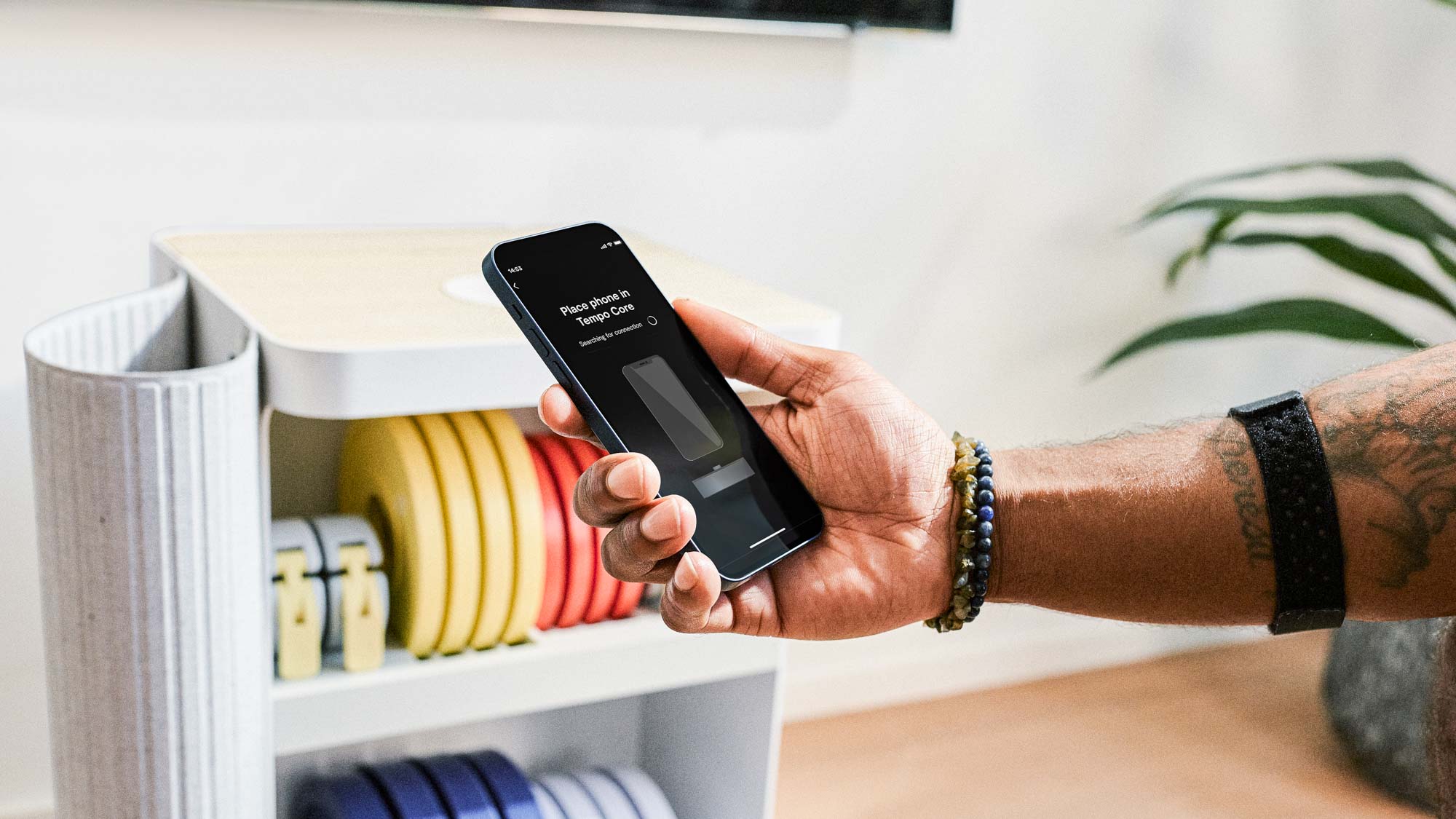
Note: No USB port on your TV? You can use a portable power brick instead to charge the Core. And sorry, Android users, this is an iOS-only device for now.
Tempo Move review: Design
What is a “smart home gym,” exactly? Similar to other personal training platforms, the Move hooks up to your TV or tablet via HDMI port to connect you with Tempo’s on-demand workouts. (Live workouts are in the works.)
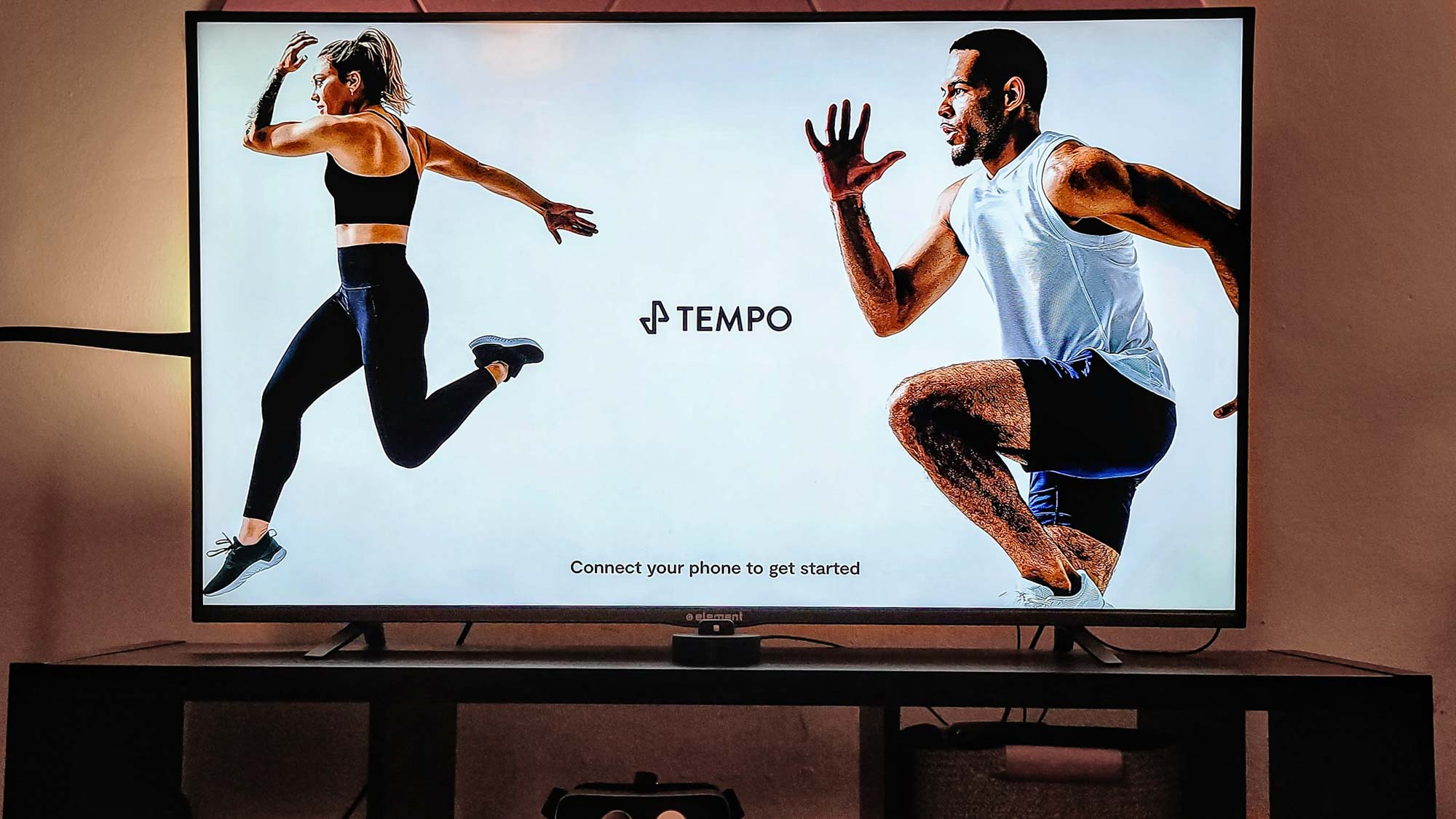
It also comes with a set of dumbbells and weight plates — in short, everything you need to get started, right from the comfort and privacy of your home. What sets the Move apart from other smart gyms? It’s all about that 3D Tempo Vision tech, which analyzes your movements as you exercise and makes suggestions to improve your form. The future of fitness is pretty damn awesome, if I do say so myself.
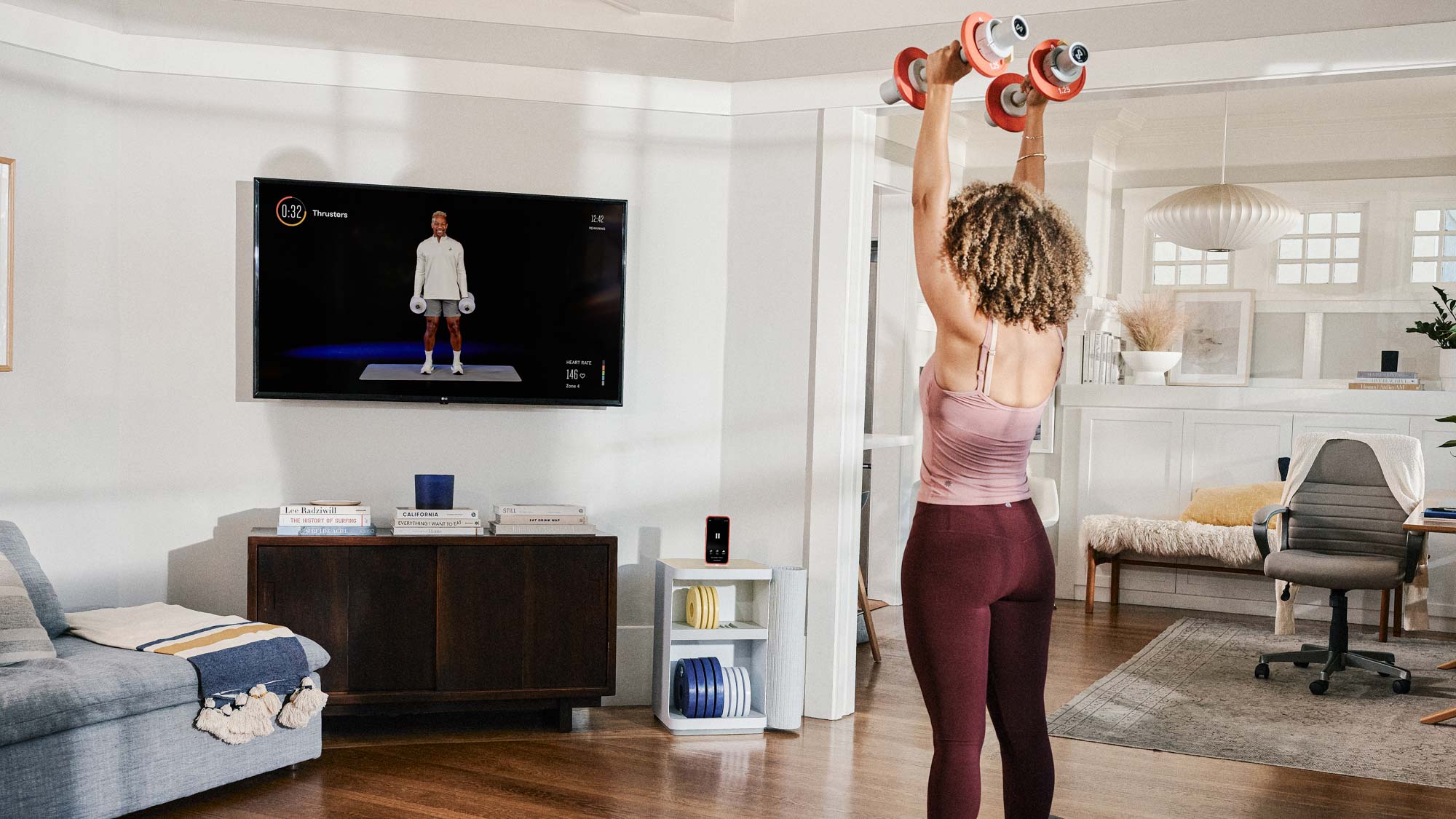
For one fifth the cost of the bulky-yet-cool-looking Tempo Studio, it’s nice to see that the company doesn’t skimp on the Move in terms of engineering aesthetics. Its compact 22 x 13.5 x 13.5-inch size fits neatly between my TV and bookshelf.
The Tempo Core, a hockey puck-looking gadget that sits on top of the cabinet — or anywhere else you feel like perching it — docks to your iPhone after connecting it to your TV or tablet via HDMI/USB-A.
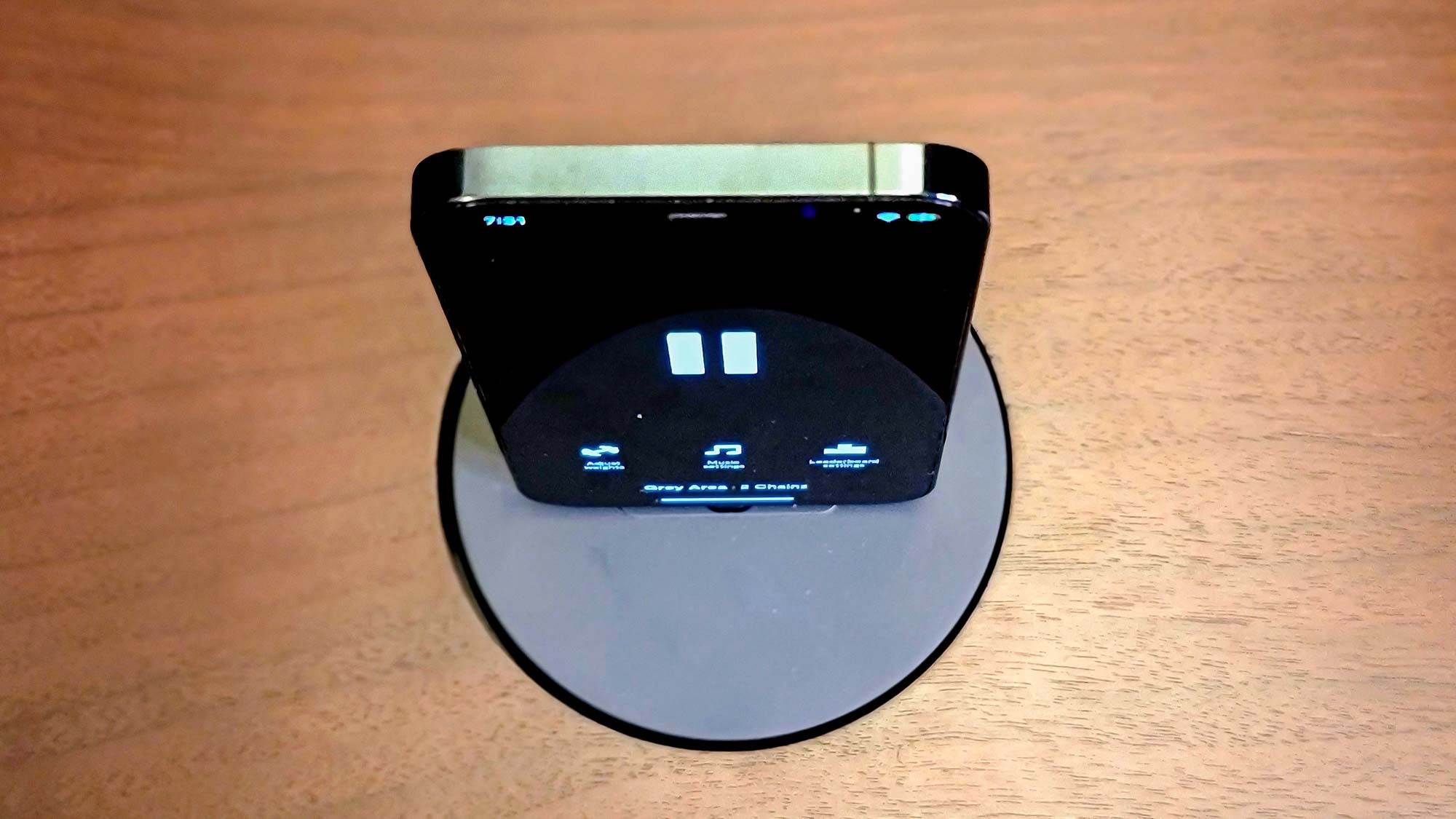
Whereas you have to position your body just so in front of the bulky Tempo Studio’s sensors, you can place the Core wherever is convenient and adjust both it and your body accordingly; I positioned mine on the TV stand for most of my testing, slightly off-center of the TV.

There’s a compartment in the back to house the dumbbell bars, and a mesh magnetic cover to discreetly hide the weight plates inside, which are neatly stacked in their own individual slots. Another unique design: the top can be removed for additional weight, resistance band, and cable storage. (I was using the Move for over a week before I even noticed this hidden cubby.) Bonus points for effortless accessibility, Tempo. This thing is perfect for apartment dwellers such as myself.

In contrast, the 72 x 26 x 16-inch easel-shaped Tempo takes up way more space, and it’s not easy to move by yourself. The tower weighs 100 pounds by itself, but with the weights racked (and barbells hung in the back), the whole apparatus clocks in at about 215 pounds. I also recommend getting some exercise mats for your workout area to avoid damaging the floor with any dropped weights; a half inch will do the trick, and your feet will thank me later.
Unlike the NordicTrack Vault, which includes dedicated pairs of dumbbells for each and every weight (between 5 and 30 pounds, in increments of 5), Tempo opted for removable plates, which can be swapped out at will on the 7.5-pound dumbbell bars. This results in a more gym-like experience for those used to plated workouts, and better customization when it comes to swapping out weights, since Tempo includes 1.25 and 2.5-pound plates. The bars felt great in hand, with comfortable knurls to grip. The plates are coated with a soft, rubber-like material that’s easy on the fingers when re-racking weights, and easier on your floor than standard all-metal plates.
Tempo Move review: Fitness classes
Once you are all set up, you’re at the mercy of Tempo’s team of fitness coaches, who offer a dynamic range of strength training, mobility, and HIIT workouts. In addition to pre-recorded classes, you can join specific programs to help improve muscle definition, lose weight, and improve your overall health. These classes are partially dependent upon the equipment you have on hand; in my testing, I easily counted more than 200 at my fingertips, but at this point there are thousands of classes to choose from on Tempo’s platform, with new ones being added each week.
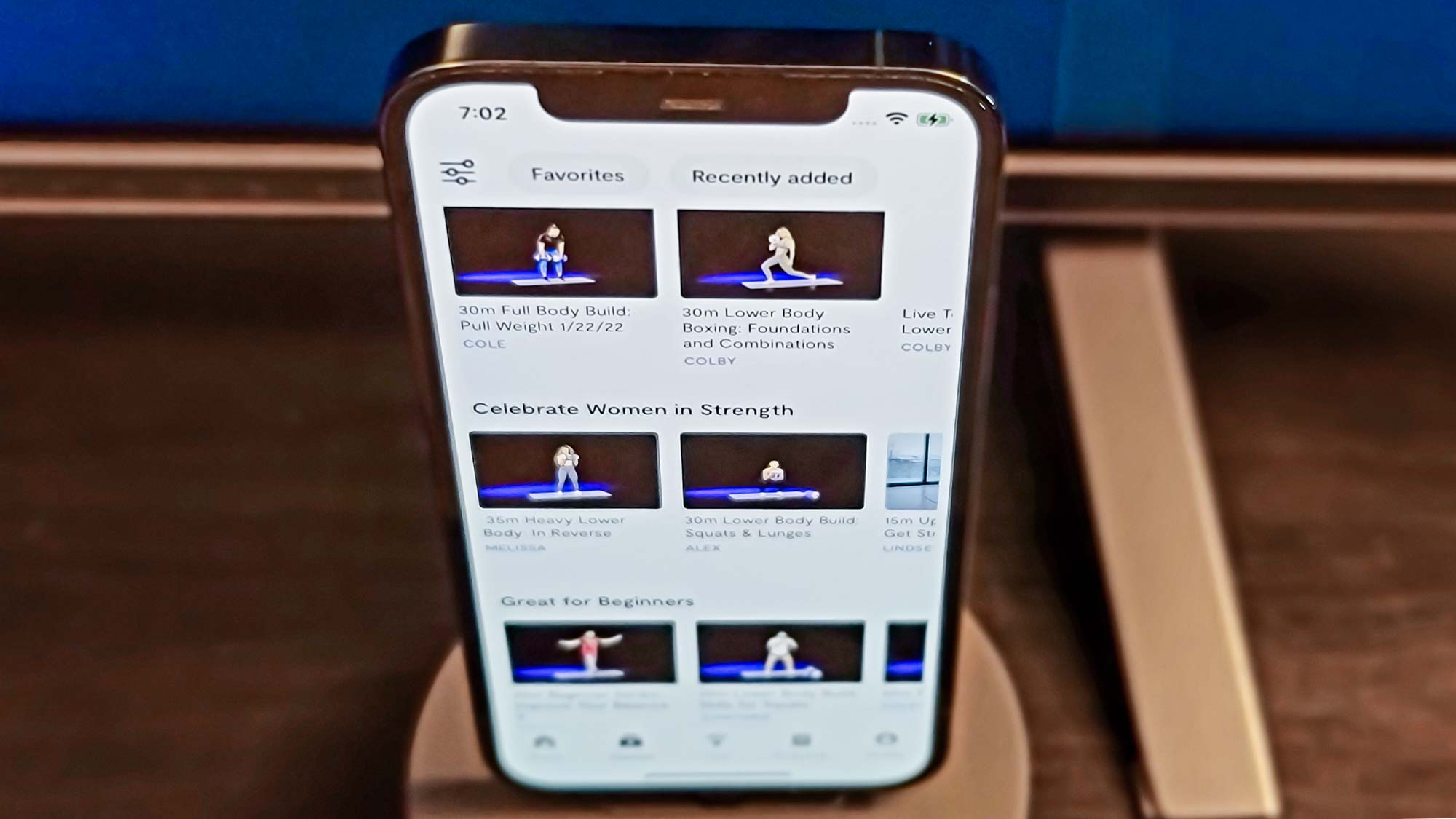
"Simply put, the fitness industry is broken. It continues to promise people that they are one piece of equipment away from their fitness goals, but what they’re really missing is a trainer -- someone who will guide them, teach them, and keep them on track," said Moawia Eldeeb, Tempo CEO and co-founder, and former personal trainer. “Tempo uses AI to make personal training accessible to everyone, and with the Move, we’re taking a huge step towards that goal.”
There are four main tabs to explore in the highly intuitive Tempo app:
Home - From here you can keep track of your weekly classes; select the next workout of a given program you’re enrolled in; and browse a few other class recommendations from Tempo to “keep you moving.”
Classes - This is where you can filter classes by workout type, duration, difficulty level, muscle group, and/or the trainer you want to work with; there are ten coaches in total, and they each bring their own unique flavor of training to the table. There’s a button at the top of the screen to view recently added classes, but you also scroll down to browse by category (eg. Yoga, Strength Training for Runners, Core and More, Celebrate Women in Strength). This is arguably the most important part of the UI, and Tempo nails it.
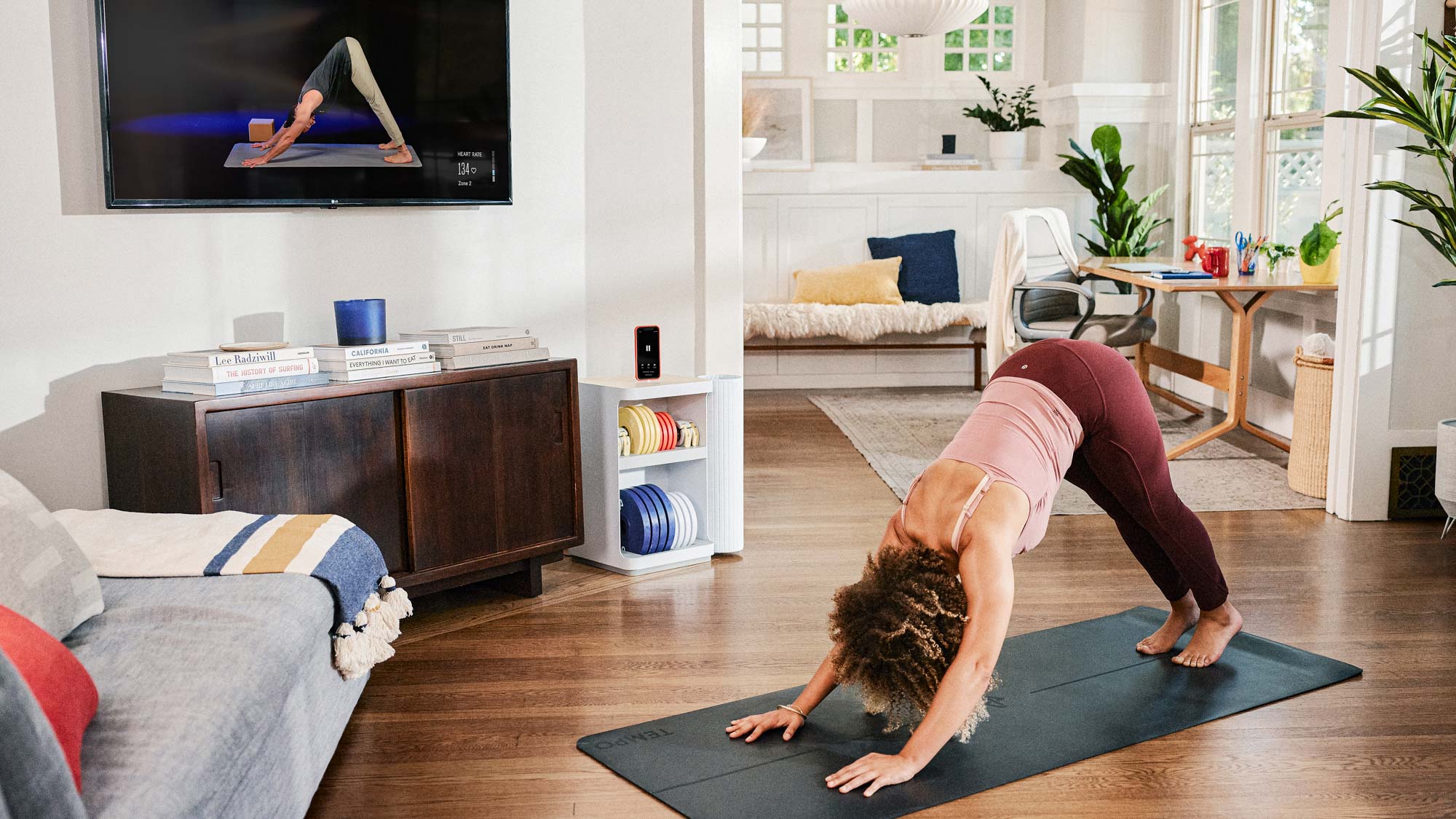
Live - This tab isn’t activated yet, but once Tempo adds live classes to the mix, it’ll add that much more value to the platform.
Programs - From this tab, you can peruse a variety of Tempo-curated workouts. For example, the Tempo Winter Games program consists of six classes led by Beijing-bound Olympic athletes Mark McMorris, Maame Biney, and Mike Schultz. The platform doesn’t feel quite as robust as iFit or Peloton, but there’s still lots to like.
Profile - This is where you can see how many workouts you’ve done, the calories you’ve burned, and the total volume of weight you’ve lifted. (You can view workouts from the past 7 days, 30 days, or all time.) The gear icon up top lets you adjust notification settings, change your password, invite other family members to your Tempo membership (up to five), and manage other preferences.
To put the Tempo Studio through its paces (along with myself), I tried out a few different yoga classes and strength-training workouts with Jeremy Falk, Melissa Boyd, and Clarence Hairston. Tempo truly takes out any guesswork with their onscreen instruction; before each class, the software tells you what equipment you’ll be using, and what weights to load up based on your fitness profile. (As each workout progresses, you can pause right from your phone to adjust weight plates as necessary.) The coaches are friendly, knowledgeable, and pleasantly conversational; they guide you through every meticulous movement, emphasizing proper form and technique all the way. There are lots of in-workout music options, too.
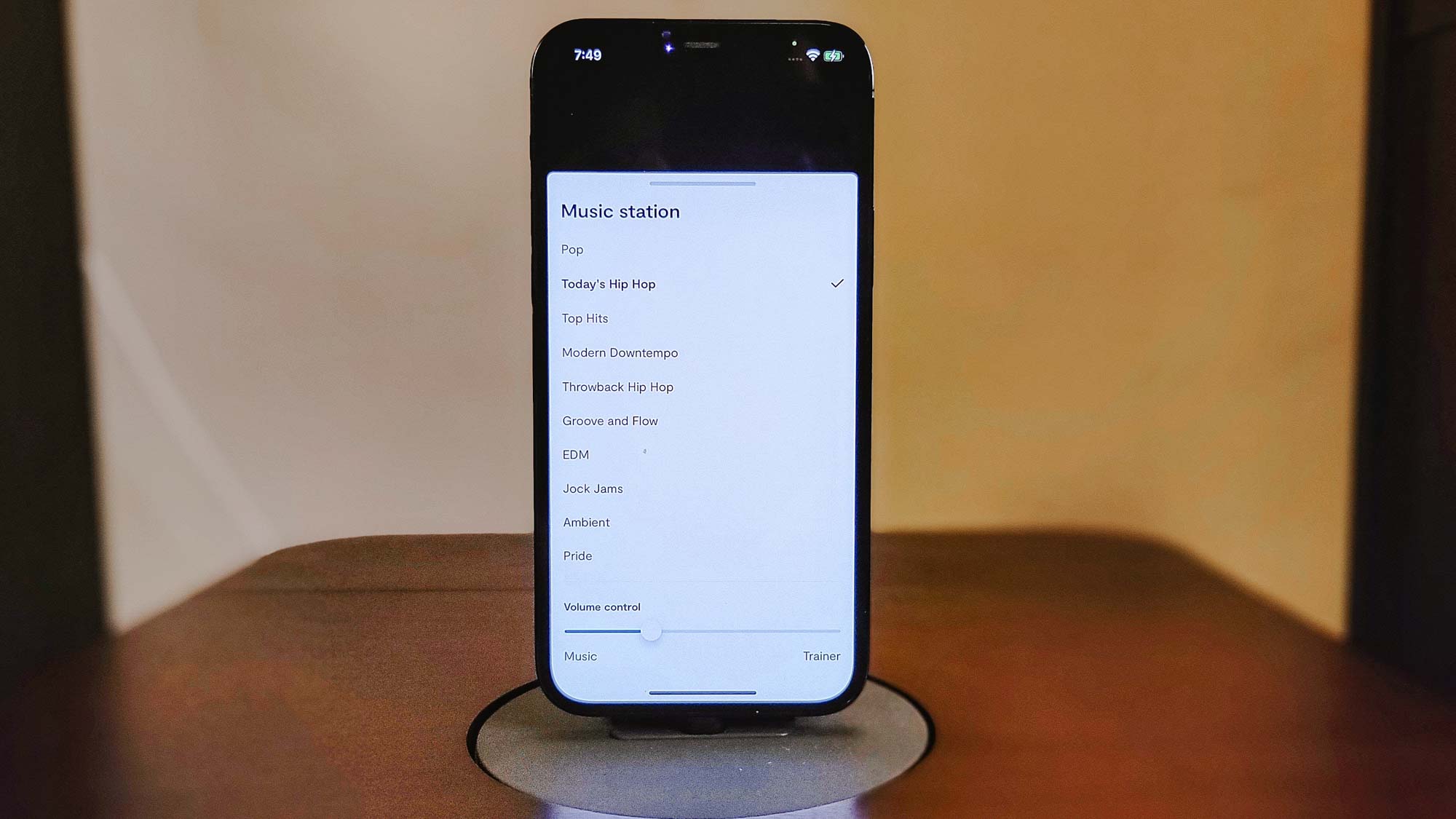
From my 55-inch TV screen, it honestly felt like I was in the same room with my coaches, resulting in surprisingly intimate solo workouts. A red rectangle appears at the bottom of the screen if you move out of range from the iPhone’s camera. (The rectangle turns green when you’re standing in the right place.)
In my testing, the Move tracked my movements with excellent accuracy as I followed along with my coaches, and it certainly gamifies your workout a bit to watch that rep counter in the corner.
Tempo Move review: 3D Tempo Vision + Apple True Depth
The standout feature here is 3D Tempo Vision, which uses artificial intelligence — in conjunction with your iPhone’s camera — to analyze your movements and keep track of reps as you work out. Unlike the Tempo Studio, which has this tech built right into the touchscreen — the Move offloads some of the heavy lifting to your iPhone’s True Depth sensor. As you mimic your instructor’s movements on screen, the exercise name is displayed in the upper-left corner of the screen, with your reps, pace, and heart rate tracked on the bottom; leaderboards are displayed on the right. (You can hide the leadboard if you prefer, though.)
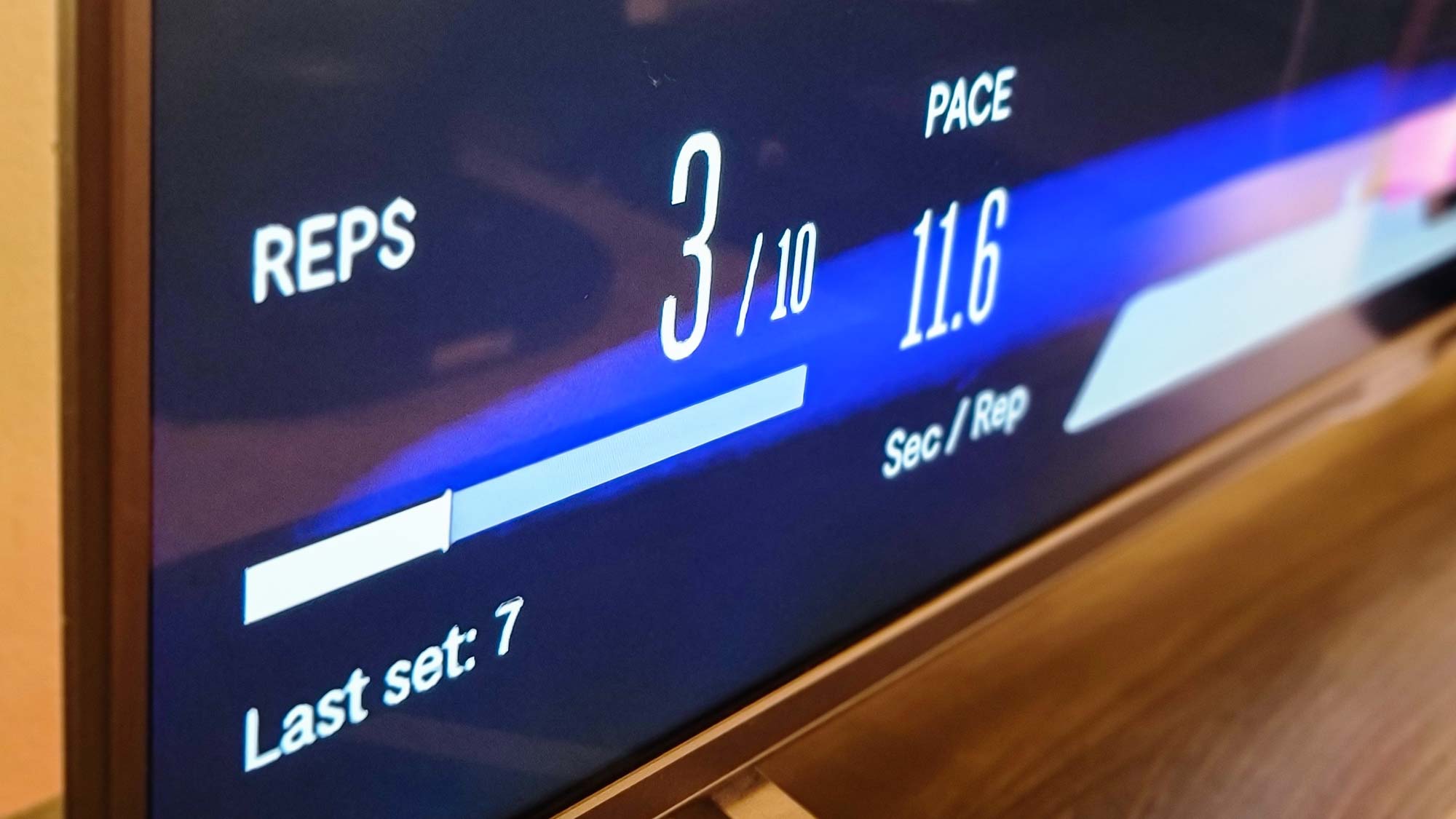
I could tell Tempo’s tech was taxing my iPhone’s hardware pretty well; when I undocked the phone from the Core module, the iPhone felt warm to touch. Overall, I had a great experience with the on-demand classes I took; the trainer’s instruction complemented the additional stats and leaderboards very well as I huffed my way through every rep. Only you can hold yourself responsible for personal fitness, but having a virtual reminder is never a bad thing.
Note: Not every workout offers real-time feedback and form correction, which is a bummer, but by no means a deal-breaker.
Tempo Move vs. the competition
Of course, the Tempo Move is but one of many comprehensive home gym packages. The $1,495 Mirror is an attractive wall-mounted option, but you won’t get the same strength-training elements (ex, weights, barbells/dumbbells) bundled in. The $2,999 NordicTrack Vault combines the sleek reflectivity of the Mirror with similar gym accessories as Tempo, and its iFit class offerings are just as robust, if not more so. (The Vault’s value also increases somewhat if you own other iFit-enabled equipment, such as a treadmill or stationary bike.)
All of these smart gyms require a monthly subscription of $39, but if you’re willing to shell out that kind of coin, I’d say the Tempo Move is the best value overall; it’s a premium product that’s also perfectly portable.
Tempo Move review: Bottom line
For iPhones users who are ready to transform their living room into a futuristic fitness center, look no further than the Tempo Move. It’s way more compact than the Tempo Studio, and nearly as comprehensive in terms of platform offerings. (Still waiting on those live classes, though.)
Can the Tempo Move replace your gym membership? That all depends on your personal goals, but it’s not a bad place to start. Tempo genuinely provides you with all the tools you need to optimize your body and mind from the inside out, one day at a time. Granted, Tempo will get some competition in the near future from the new Peloton Guide strength trainer, which seems to share similar attributes, specs, and capabilities. (Including that $495 price point, incidentally.) But for less than $500, I’d say this smart gym is worth the investment, no matter how lofty — or casual — your fitness routine may be.

As a freelance journalist, TJ has over a decade of multi-medium storytelling under his belt. Leveraging a quarter century of collective coddiwompling amid the ever-evolving landscape of wireless gadgetry, his unique editorial background allows him to explore a variety of tech-centric subsectors on this fascinating planet. When he's not field testing new gear in the Catskills, Adirondacks, or an actual field, he can be found sipping Negronis in his living room and crafting Dr. Seussian poetry inside a tattered moleskin.
